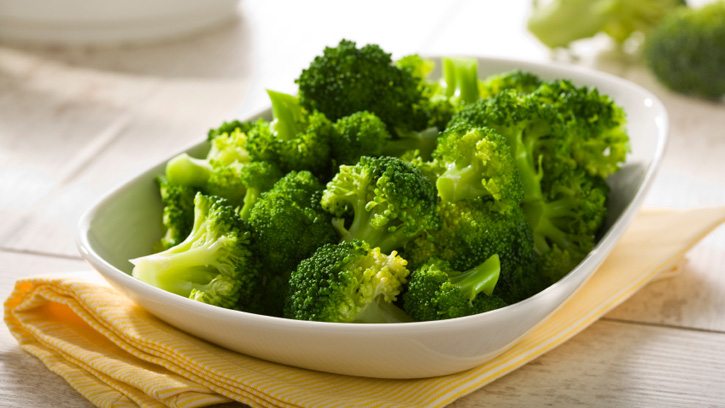Broccoli
Episode #2 of the course “Superfoods you should know about”
A green member of the cabbage family, broccoli has been considered a valuable and desirable food in Italy for as long as 2,500 years. It is rich in vitamins C and K, as well as essential trace minerals and fiber, and it can be served raw or cooked in a variety of ways—steamed, fried, boiled, and baked, to name a few. Although many plants are not entirely edible, both the stems and the heads of broccoli plants (called “florets”) can be eaten, making it a versatile vegetable. Most commonly, broccoli varieties are green, but some are purple or white.
Broccoli is one of the best sources of dietary fiber in its natural form, keeping the digestive system functioning regularly. Broccoli also often contains more vitamin C than many of the most popular and well-known sources, such as citrus fruits. Vitamin C is a great way to support the immune system’s job of fighting disease. However, many culinary and dietary experts agree that broccoli’s nutrients are depleted when it is cooked for long periods of time. While some recipes call for cooking the vegetable until it is boiled soft, the crisper the vegetable remains, the more nutrients and vitamins will stay intact.

One of the natural properties that makes broccoli a “superfood” is its chemistry, which makes it helpful in preventing cancer. It contains multiple anti-cancer compounds as well as trace minerals that can help prevent the growth of cancer cells.
Unfortunately, broccoli sometimes gets a bad reputation in the United States for its smell, taste, and high fiber content. It is famous as a food that is especially unpopular with children, but if parents can help their kids develop a taste for broccoli at a young age, it can become a part of their diet that can literally change their lives for the better.
Recommended book
“The Medicinal Chef: Healthy Every Day” by Dale Pinnock
Share with friends

